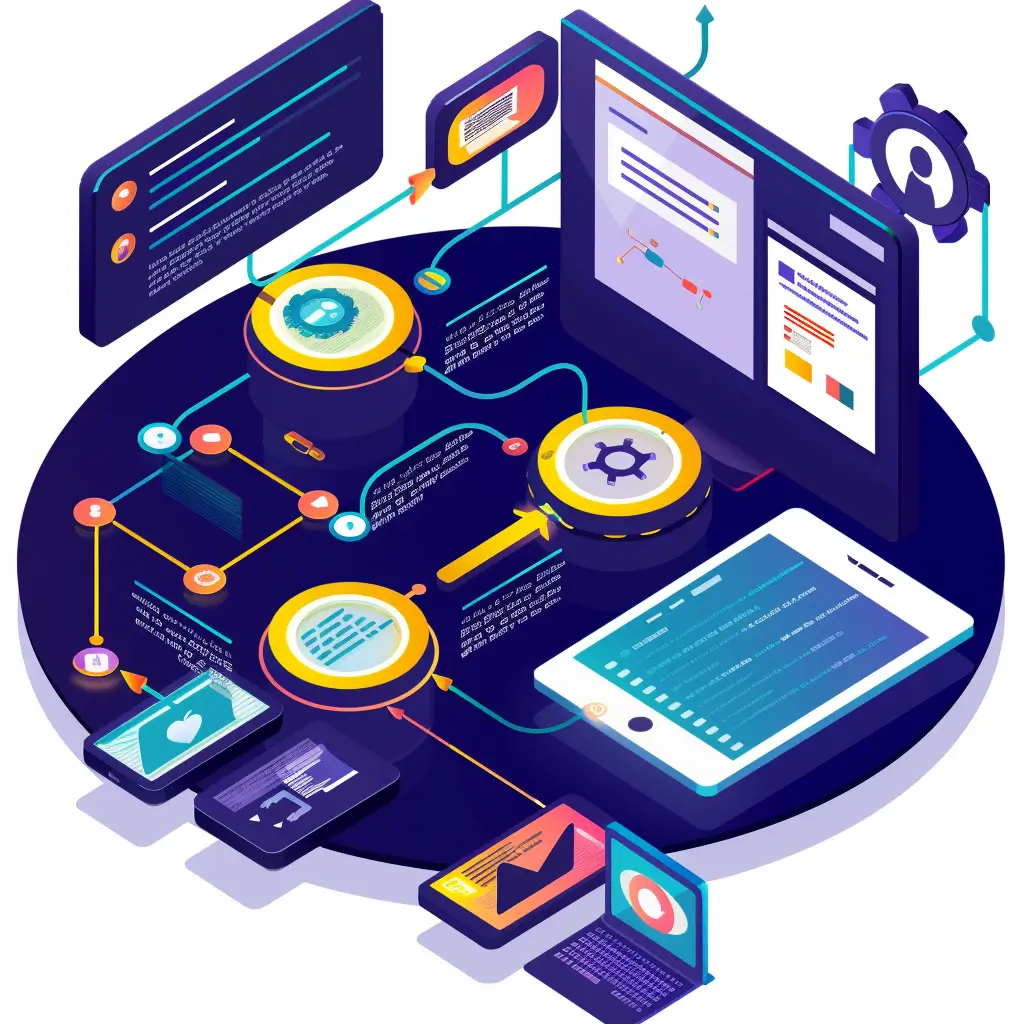I've found over the years many testers are unsure about what is synthetic monitoring?
In a nutshell Synthetic monitoring is a technique that simulates user interactions with websites and applications to identify issues with application performance, availability, and functionality proactively. This is done to detect problems before real users are impacted.
Also I've taken insights from experts on my automation testing podcast over the years as well as a recent webinar from the folks at Datadog to create this guide.
Interested in learning more? Let's take a deeper dive!
INDEX
What is Synthetic Monitoring According to the Experts
As Bridgitte Kwong, Product Marketing Manager at Datadog, explains, “Synthetic monitoring is a way for folks to ensure performance issues by simulating real user traffic. A synthetic end-to-end test can validate an entire user flow is accomplished from start to finish.”
This type of monitoring is unique since it involves running scheduled scripts or tests from global locations to measure key metrics like page load time, error rates, and transaction success.
Mike Peralta, Senior Product Manager at Datadog, notes that synthetic monitoring “allows you to test and monitor end-user experiences, whether that's on mobile apps or on your website, but also test what's supporting those behind the scenes with your different APIs.”
Synthetic Monitoring vs. Real User Monitoring (RUM)
The next question that often confuses testers is:
What is the difference between synthetic monitoring and real user monitoring?
Unlike real user monitoring (RUM), which passively collects data from actual end-user sessions, synthetic monitoring provides 24/7 active oversight of the end-user experience and application health, even during periods of low traffic.
Bridgitte clarifies, “Real user monitoring and synthetic monitoring both provide different types of insights into how well your application performs. Synthetic monitoring is more proactive, while real-user monitoring is focused on understanding a real user's interaction with your application, so it's more reactive.”
Mike adds, “Real-user monitoring lets you capture what users have already done. Proactive synthetic monitoring lets you capture issues before users encounter them.”
The two approaches, however, are not mutually exclusive.
Hannes Lenke, a guest on my performance testing podcast, mentioned that there is a need for synthetic monitoring alongside RUM:
“Synthetics enable you to have an artificial user that you can control. But remember, it's not a real end-user interacting with the application, but something artificial. That's why you want to also include real user monitoring in production to capture any real issues that might be occurring.”
The Importance of Continuous Testing
In a recent Test Guild webinar now available to view on demand, Bridgitte emphasizes the importance of continuous testing in today's world of Agile development. She explains that continuous testing involves an ongoing and automated testing practice integrated throughout the software development lifecycle. This approach helps enable faster feedback loops from development to production and allows for the early detection of issues.
Reasons to Use Synthetic Monitoring
What are some of the reasons you should check out synthetic monitoring, and how does it help?
- Synthetic tests typically cover critical user journeys like logins, searches, and checkouts.
- Synthetic tests often incorporate real browsers to fully render pages and execute complex interactions.
- Advanced synthetic solutions can test front-end interfaces as well as back-end APIs.
- By establishing performance baselines and detecting deviations, synthetic monitoring is an essential tool for:
- Meeting service level agreements (SLAs)
- Validating deployments
- Ensuring a consistently excellent digital experience
- Synthetic monitoring supports continuous testing practices by providing an automated and ongoing testing process throughout the software development lifecycle. This helps catch issues earlier and facilitates faster feedback loops between development and production.
When combined with real-user monitoring, synthetic monitoring provides complete visibility into application behavior and user-perceived performance.
Benefits of Synthetic Monitoring
As you've seen, there are many things that synthetic monitoring can help you with. Here are some key benefits, as emphasized by the experts at Datadog:
- Proactive issue detection: Synthetic monitoring identifies performance, availability and functionality problems before they impact real users, allowing for faster remediation.
- 24/7 monitoring: Scheduled synthetic tests run continuously, providing oversight even during off-peak hours when real user traffic is low.
- Baseline performance: Establishing performance benchmarks with synthetic monitoring makes it easier to spot anomalies and degradation over time. Web performance monitoring is critical for spotting things like poor response time.
- Geographic coverage: Running synthetic tests from multiple locations around the world helps identify regional performance variations and issues.
- Testing critical user flows: Synthetic scripts can simulate key user journeys and workflows like login, search, and checkout to ensure the most important functions are always working.
- Front-end and back-end visibility: Advanced synthetic tools can test both the user interface and underlying APIs for comprehensive coverage.
- Validating releases: Synthetic tests can be integrated into CI/CD pipelines to catch performance regressions and bugs introduced by new code. This performance data gives you better insight into making your application more performant before you deploy to your users.
- SLA compliance: Consistent synthetic monitoring helps organizations meet availability and performance commitments to their users.
- Third-party impact: Synthetic monitoring can surface slowdowns caused by external services and content, not just problems with first-party infrastructure.
- Competitive benchmarking: Synthetic tools can be pointed at competitor sites to compare relative speed and performance.
- Complementing RUM: Combined with real user monitoring, synthetic monitoring provides a complete picture of application health from both active and passive perspectives.
Transform Your Testing in 5 Minutes a Day
Types of Synthetic Monitoring
There are many uses for synthetic monitoring. Here are a few that the experts called out during my podcast interviews and the Datadog webinar:
Uptime Monitoring
Uptime monitoring involves regularly testing the availability of websites, applications, and APIs to ensure they are accessible to users. As Mike explains, “You can either run from the public cloud anywhere in the world, or you can run from a specific, private location you set up for yourself. Being able to run from these different locations will ensure that your website works as you'd expect and that users can get to the flows they would expect.”
Transaction Monitoring
Transaction monitoring focuses on testing complete user flows or business processes, such as signing up for an account, searching for a product, or completing a purchase. Kwong highlights the importance of transaction monitoring: “A synthetic end-to-end test for an e-commerce company could be simulating a customer browsing products, adding items to their cart, being able to click the checkout button, entering their payment and shipping details, and finally, receiving an order confirmation.”
Page Speed Monitoring
Page speed monitoring measures how quickly key pages or interfaces load for users, often using real browser-based testing. Peralta notes, “We gather a lot of metrics, like how long it takes for pages to load. If you have our real user monitoring product as well, we can gather more Web vitals, things around different errors that may come up.”
API Monitoring
API monitoring involves testing the performance and functionality of API endpoints. As Mike explains, “Behind a website or a mobile app, there are a bunch of APIs which are supporting that mobile app or that website. And so sometimes you want to be able to test those as well to make sure they're working as you expect.”
Mobile Application Testing
Mobile application testing is crucial for organizations that have mobile apps. Datadog's synthetic monitoring solution offers mobile testing capabilities, allowing users to test their applications on real Android and iOS devices.
As Mike asserts, “Similar to browser testing, you can simplify mobile test creation with the no-code recorder. You can test on real Android and iOS devices across different device permutations to make sure you're providing a reliable app experience across device types and OS versions.”
Some Challenges of Test Automation
While synthetic monitoring offers numerous benefits, teams often encounter challenges when implementing test automation. Some common issues include:
1. Scripting Knowledge: Creating and maintaining automated tests often requires extensive scripting knowledge, which can place a burden on engineering and QA teams.
2. False Positives: Automated testing tools can generate false positives, alerting teams to issues that don't actually impact the user experience. This can lead to alert fatigue and wasted resources.
3. Coverage Difficulties: Ensuring comprehensive test coverage across different devices, locations, and operating systems can be challenging and time consuming.
Datadog's synthetic monitoring solution addresses these challenges by providing a user-friendly, no-code testing experience, reducing false positives through self-healing tests, and offering managed locations for simplified test coverage.
The 7 Step Getting Started with Synthetic Monitoring Process
To begin leveraging synthetic monitoring, the experts recommend that you:
- Identify your most critical user journeys, transactions, and APIs
- Create synthetic scripts that simulate those user flows
- Select a synthetic monitoring tool that meets your needs
- Schedule tests to run 24/7 from relevant geographic locations
- Integrate synthetic tests into your CI/CD pipeline
- Set up alerts to proactively notify you of any issues
- Regularly analyze synthetic monitoring data to optimize performance.
So, what do you think?
Try it for yourself and let me know if using synthetic monitoring alongside real-user monitoring, gives you awesome visibility into the health and performance of your digital experience. This proactive approach empowers you to detect issues before users are impacted, meet SLAs, and consistently deliver an excellent user experience.






